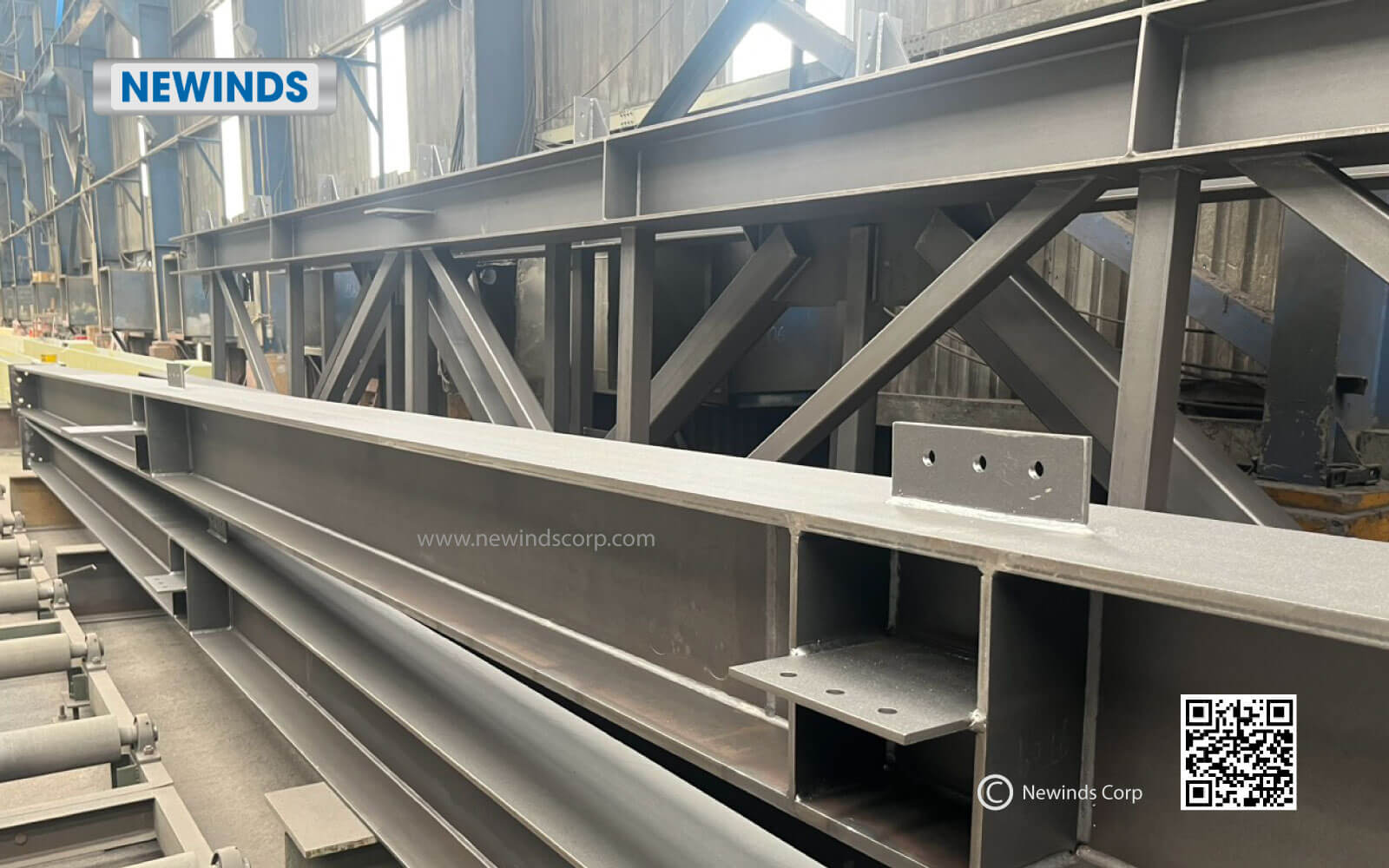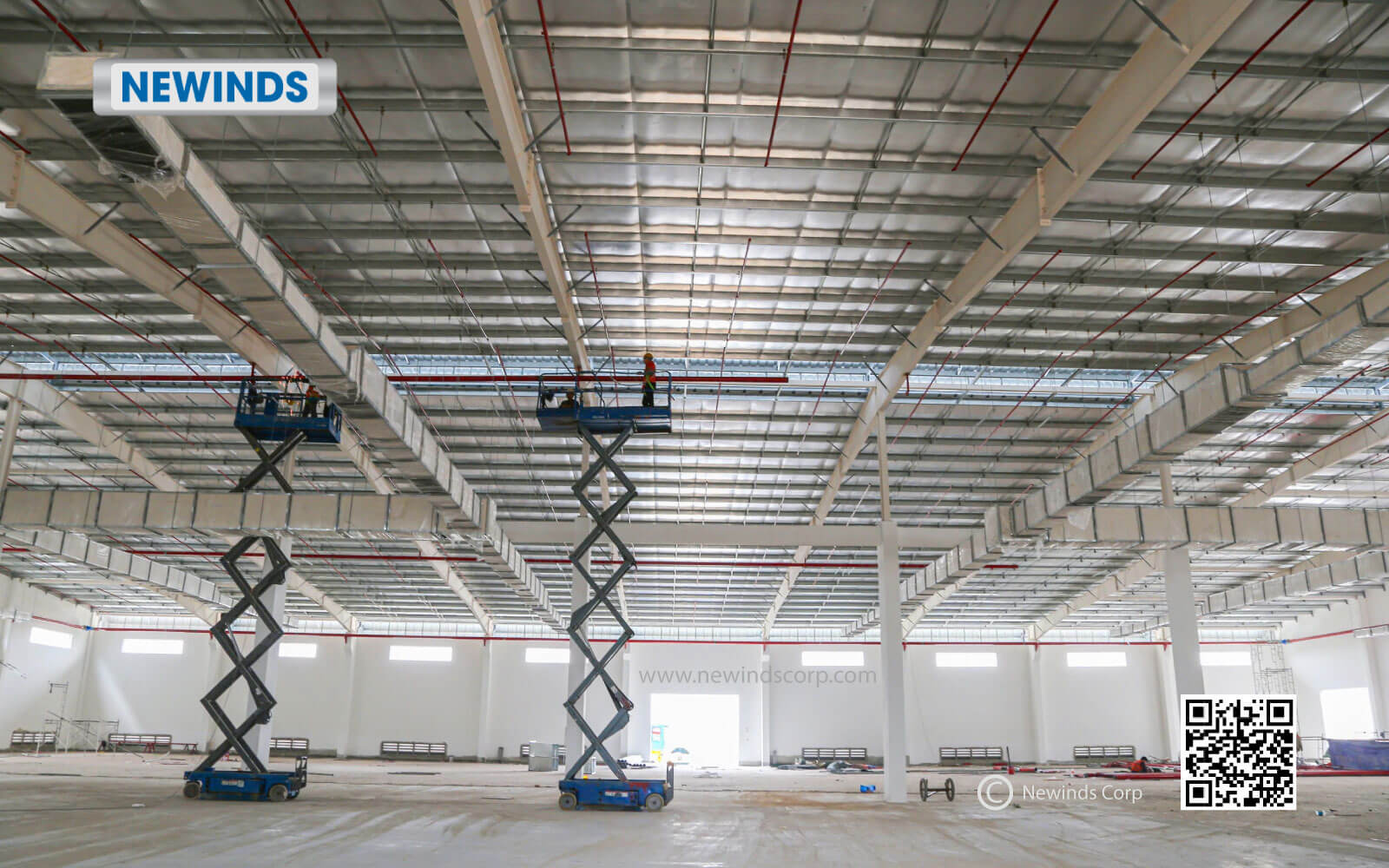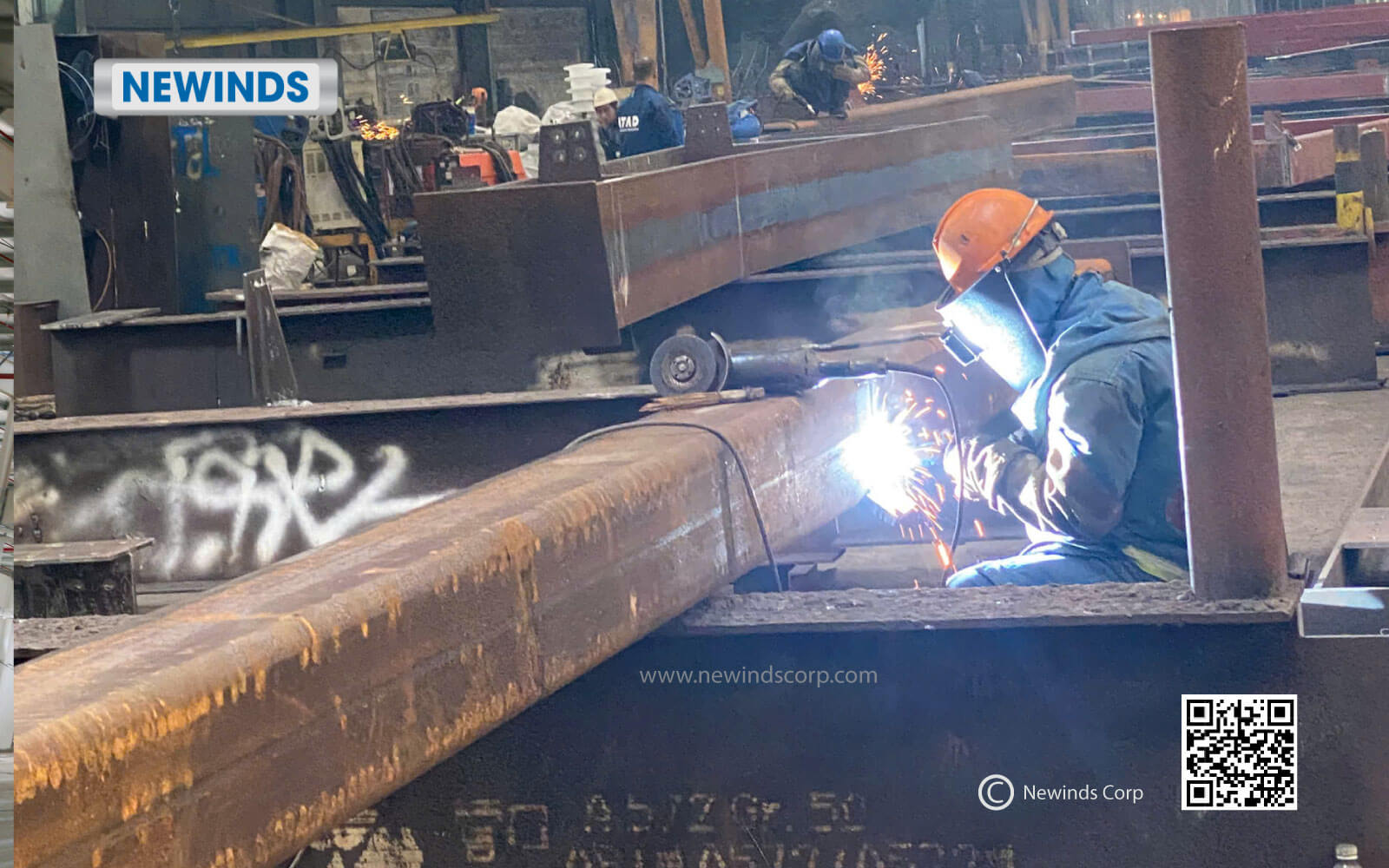The demand for steel structure construction is steadily increasing due to its flexibility, superior durability, and high load-bearing capacity. Today, steel structures serve a wide range of industrial and commercial sectors, including construction, mining, infrastructure, automotive, machinery & equipment, and more.
What is a Steel Structure?
A steel structure is an assembly of steel frames, created from different steel components such as beams, columns, trusses, and plates. These are then bolted or welded together to provide load-bearing capacity and rigidity for construction projects. Due to its high tensile strength, ductility, and excellent load-bearing properties, steel can be easily shaped and flexibly designed into various forms and sizes, making it well-suited for steel projects with diverse architectural requirements.
With its durability and ease of assembly, steel structures are widely used in various types of pre-engineered steel buildings projects, including production plants, industrial warehouses, infrastructure projects, residential buildings, and energy and telecommunications structures, among others.
Common Types of Steel Structures
Based on specific designs, properties, and functional requirements, steel structures are classified into types that suit various construction needs.
· Steel frame
A steel frame system consists of steel components arranged horizontally or vertically, forming a robust framework for buildings. These structures provide stability and are commonly used in high-rise buildings and other structures that require solid foundational support.
· Steel trusses
Steel truss structures are flat steel components connected to form specific shapes, primarily triangles. They are often used for roofing and bridge spans due to their high strength and capability to cover large spans without additional support.
· Steel plate
Steel plates are flat, rectangular sheets commonly used in areas requiring flat surfaces such as walls, floors, and roofs. These plates are also found in structures that demand robustness and high load-bearing capacity.
· Pre-engineered steel buildings (PEB)
PEB structures are pre-designed steel components manufactured to meet specific load requirements. Fabricated in factories, they are then transported to construction sites for quick assembly into functional structures, making them ideal for projects with tight timelines or modular requirements.
· Arch structures
Arch steel structures feature curved steel components that effectively distribute weight, creating stable, aesthetically pleasing shapes. Due to these properties, arch structures are commonly seen in public building designs like auditoriums, stadiums, conference centers, exhibition halls, train stations, and airports.
Common Shapes of Steel Structures
- I-Beam (or H-Beam): Columns, beams, and frames in buildings and bridges
- Channel Section (C-Channel): Supporting walls, flooring systems, or secondary frames.
- Angle Section (L-Shaped): Bracing, reinforcement, and support in trusses and frames.
- Hollow Structural Section: Columns, trusses, and architectural elements.
- T-Beam: Load-bearing components in floor or roof systems
- Flat Bar / Plate: ase plates, gussets, stiffeners
- Z-Section: Purlins in roofing systems
- Pipes: Structural supports, handrails, scaffoldings
Economic benefits of choosing steel structures
· Flexible design
Thanks to its flexibility, steel frames can be customized to meet various shape and size requirements, ranging from simple to complex. This allows for a wide variety of architectural styles and new functions.
· Time savings
Since it is produced under strict structural steel fabrication processes at the factory and only requires transportation to the construction site for assembly, it significantly reduces both time and construction costs.
· Durability and strength
This system provides the ability to withstand heavy loads, ensuring long-term stability against external forces. Additionally, its corrosion resistance helps prevent rust, which would otherwise affect the long-term quality of the structure.
· Fire resistance
With a fire-resistant coating or plaster applied to its surface, this system offers excellent thermal insulation, protecting the structure from melting or deforming under high heat.
· Sustainability
Steel is a material that is easily recyclable, helping reduce construction waste and lowering costs for new investments.
If you are in search of high-quality steel structure manufacturer, delivered with expert consultation and industry knowledge, we welcome the opportunity to discuss your needs.
Contact Newinds today to discuss your requirements
Email: sales@newindscorp.com
Phone/Whatsapp: +84 868 482 038


